
- For PC
- For MAC
- For Linux
- OS: Windows 10 (64 bit)
- Processor: Dual-Core 2.2 GHz
- Memory: 4GB
- Video Card: DirectX 11 level video card: AMD Radeon 77XX / NVIDIA GeForce GTX 660. The minimum supported resolution for the game is 720p.
- Network: Broadband Internet connection
- Hard Drive: 23.1 GB (Minimal client)
- OS: Windows 10/11 (64 bit)
- Processor: Intel Core i5 or Ryzen 5 3600 and better
- Memory: 16 GB and more
- Video Card: DirectX 11 level video card or higher and drivers: Nvidia GeForce 1060 and higher, Radeon RX 570 and higher
- Network: Broadband Internet connection
- Hard Drive: 75.9 GB (Full client)
- OS: Mac OS Big Sur 11.0 or newer
- Processor: Core i5, minimum 2.2GHz (Intel Xeon is not supported)
- Memory: 6 GB
- Video Card: Intel Iris Pro 5200 (Mac), or analog from AMD/Nvidia for Mac. Minimum supported resolution for the game is 720p with Metal support.
- Network: Broadband Internet connection
- Hard Drive: 22.1 GB (Minimal client)
- OS: Mac OS Big Sur 11.0 or newer
- Processor: Core i7 (Intel Xeon is not supported)
- Memory: 8 GB
- Video Card: Radeon Vega II or higher with Metal support.
- Network: Broadband Internet connection
- Hard Drive: 62.2 GB (Full client)
- OS: Most modern 64bit Linux distributions
- Processor: Dual-Core 2.4 GHz
- Memory: 4 GB
- Video Card: NVIDIA 660 with latest proprietary drivers (not older than 6 months) / similar AMD with latest proprietary drivers (not older than 6 months; the minimum supported resolution for the game is 720p) with Vulkan support.
- Network: Broadband Internet connection
- Hard Drive: 22.1 GB (Minimal client)
- OS: Ubuntu 20.04 64bit
- Processor: Intel Core i7
- Memory: 16 GB
- Video Card: NVIDIA 1060 with latest proprietary drivers (not older than 6 months) / similar AMD (Radeon RX 570) with latest proprietary drivers (not older than 6 months) with Vulkan support.
- Network: Broadband Internet connection
- Hard Drive: 62.2 GB (Full client)
|
The powerful armament of the Messerschmitt Bf 110 is ideally suited to destroying bombers, as demonstrated in December 1939 over the seas north of Germany. The Messerschmitt Bf 110 C-4 has many strengths. With bomb pylons unlocked it can carry a 500kg bomb load, as much as some dedicated bombers of a similar rank, making it a very useful fighter-bomber. It is one of the fastest aircraft in Rank I, allowing sensible pilots to stay out of trouble - maintain altitude, avoid losing speed in tight turns and you should be able to pick and choose your fights unless up against higher level opposition.
It also has very powerful armament: two 20mm cannon that can be loaded with explosive Minengeschoß shells and four machine guns, all concentrated in the nose. Head-on attacks are always risky but nose-mounted guns give you the best chance of taking out an opponent at long range, open fire from 1.5km (1 mile) and start to evade around 1km (0.6 miles) where many pilots start shooting.
The weakness of the Bf 110 is lack of manoeuvrability. Although slightly better than the Do 17 Z-7 immediately before it in the tree these heavy fighters need a different style of flying to the agile biplanes that new pilots may recently have graduated from. Avoid dogfights, do not try and turn with a lighter fighter. Instead stay at high altitude, line up an enemy and dive down on them making one pass. If they dodge, or you miss, do not turn tightly; keep flying away at high speed until a safe distance away, regain altitude, and repeat the process. This is the essence of "Boom and Zoom", a key technique for German aircraft through the ranks.
The Bf 110 is ideally equipped to tackle the larger bombers and flying boats of Rank I/II such as the PBY Catalina or Wellington. These can be tough targets for fighters equipped only with machine guns, but the cannon of the Bf 110 allow it to live up to its German designation of ‘Zerstörer’ (Destroyer). Lack of manoeuvrability is not an issue against lumbering bombers, though you do need to be careful of defensive fire from turrets; do not stay completely straight and level behind one, even a single light machine gun can be fatal to your pilot.
In game it is one of the fastest fighters in Era 1 with a speed of 538 km/h. It packs incredible firepower with 4x 7.92mm MG’s and 2x
20mm cannons with a copious 360 rounds all in a centreline mount, a hard hitting package that will reach out and swat aircraft far away.
The prowess of the Bf 110 as a bomber destroyer was demonstrated in a battle of December 1939 that had a profound impact on RAF strategy for the rest of the war. After the German invasion of Poland in September 1939 there followed several months with little fighting, the so-called "Phoney War". The British launched some desultory bombing attacks against the German Navy with little effect. Defending Luftwaffe squadrons, equipped with early-mark Bf 109s at the start of the war, had some success, but the RAF believed that the concentrated defensive fire from a tight formation of bombers was sufficient drive off enemy fighters.
PROS AND CONS OF THE PLANE:
|
|
I./ZG 76, a veteran Bf 110 unit from the Polish campaign, relocated to North Germany near the naval base at Wilhelmshaven on December 17th 1939. The following day the RAF despatched 24 Wellington bombers on another mission against the German Navy. Two had to return to base; the remaining 22 were detected by German radar 70 miles out. The Luftwaffe did not respond immediately as an attack in such clear weather seemed unlikely, but after visual confirmation of the radar reports Bf 109s and 110s scrambled to intercept. One flight of Bf 110s had been out on patrol and had just finished refuelling; pilot Helmut Lent, impatient to get into action and add to the one kill he had scored over Poland, started to take off even as an armourer slid down from his wing having just fitted a new ammunition drum.
Visit official War Thunder wiki for more information about this German Attacker.
The Wellingtons reached Wilhelmshaven but were unable to attack their primary targets - they were forbidden from bombing ships moored quayside for fear of civilian casualties. Under heavy anti-aircraft fire, including the batteries of the Scharnhorst and Gneisenau, the formation started to break up. As the bombers turned for home and the flak barrage died down the Messerschmitts pounced. For the next half hour over 40 German fighters mounted a prolonged attack on the Wellingtons, the greater endurance of the Bf 110s allowing them to sustain the attack the longest. Twelve Wellingtons were shot down, six more were damaged. They accounted for three Bf 109s in return; no Bf 110s were lost, though several suffered varying degrees of damage - Wolfgang Falck, having claimed two Wellingtons (one later confirmed) made a forced landing with one engine knocked out, prompting him to comment afterwards that it was his first and last time as a glider pilot. Both sides overclaimed heavily, as is inevitable in large, confusing aerial battles where aircraft are engaged by multiple opponents. British gunners claimed 12 fighters shot down and another 12 heavily damaged; German pilots claimed 38 victories, with 27 being confirmed.
DISCOVER THE LIVE SITE - SKINS FOR BF 110
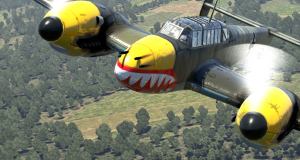 |
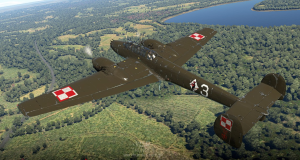 |
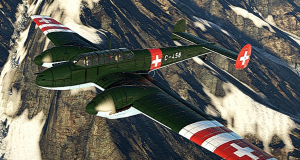 |
Named the “Zerstörer” (“Destroyer” in English), a very appropriate name for its mission, to destroy anything that is in front of it.
The losses sustained in what became known as The Battle of the Heligoland Bight were a substantial factor in convincing the RAF that defensive firepower alone could not protect bombers; from 1940 until the end of the war the vast majority of Bomber Command operations were conducted at night. The Battle of Britain demonstrated the vulnerability of the Bf 110 to modern single-engine fighters, especially when closely tied to bombers as an escort, but it remained a formidable defensive weapon. The Bf 110 formed the backbone of German night fighter units created as a result of Bomber Command's switch to night operations. The first, NJG 1, was commanded by Wolfgang Falck who became known as the "Father of the Night Fighters". One of his pilots was another veteran of Heligoland, Helmut Lent (three Wellingtons claimed, two confirmed), who went on to become one of the most successful Luftwaffe night fighter pilot with 110 total victories.
Author: John "Zoso" Moore
Want to read more about the vehicles in War Thunder? Find other Vehicle Profiles on our website!
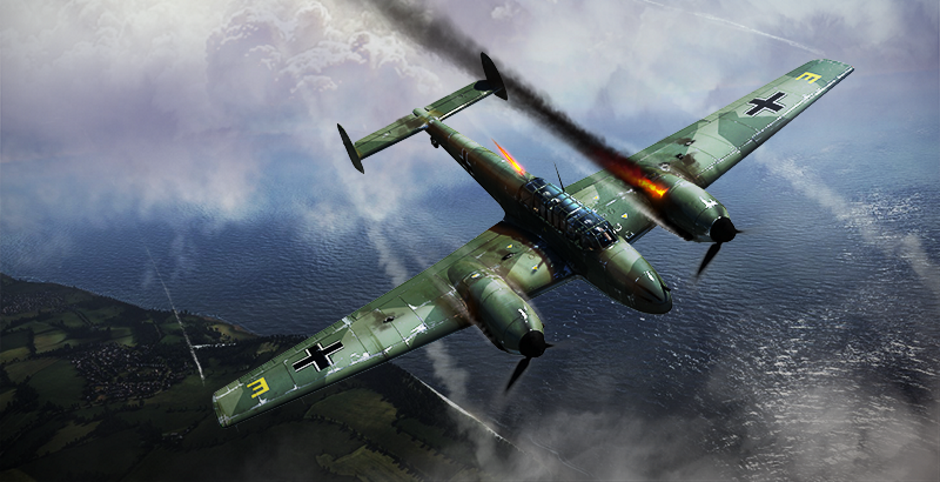
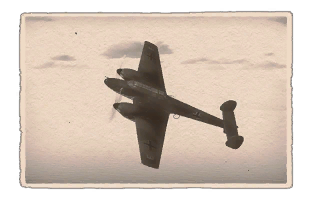
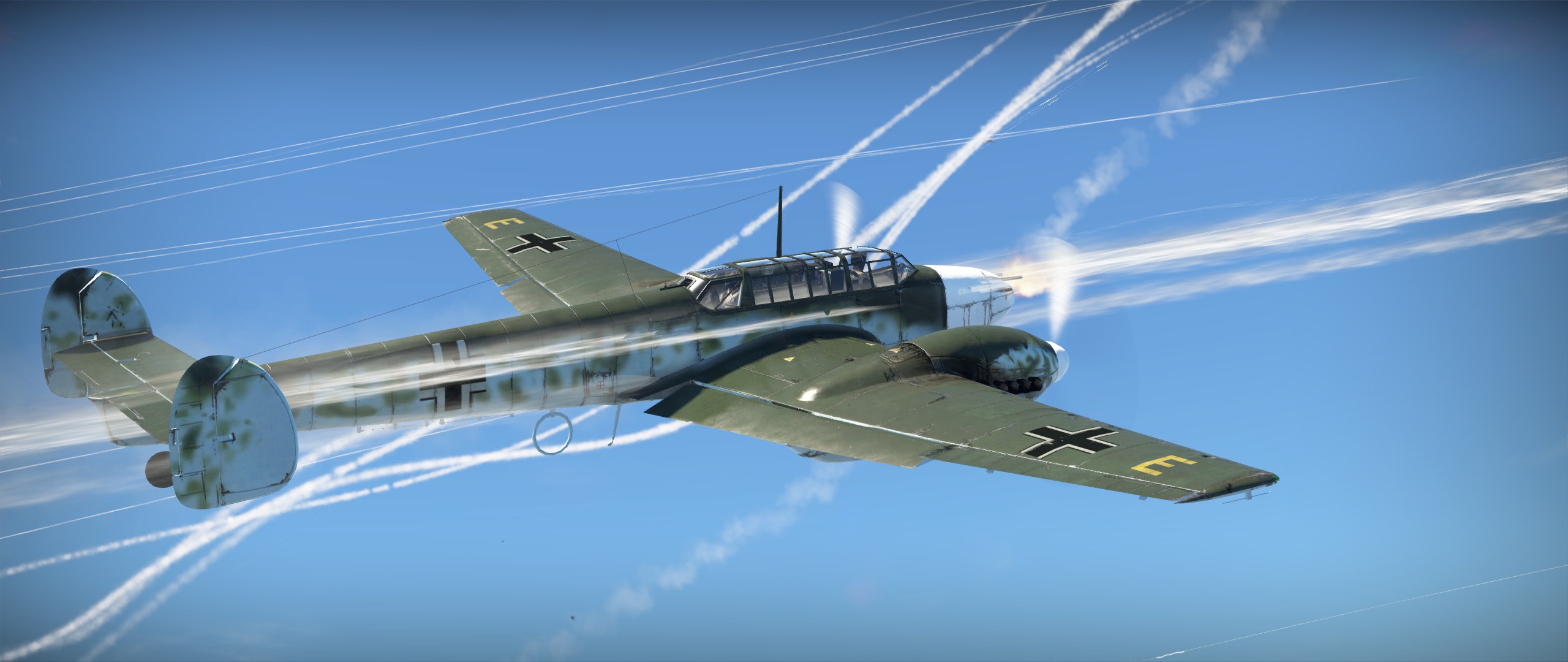
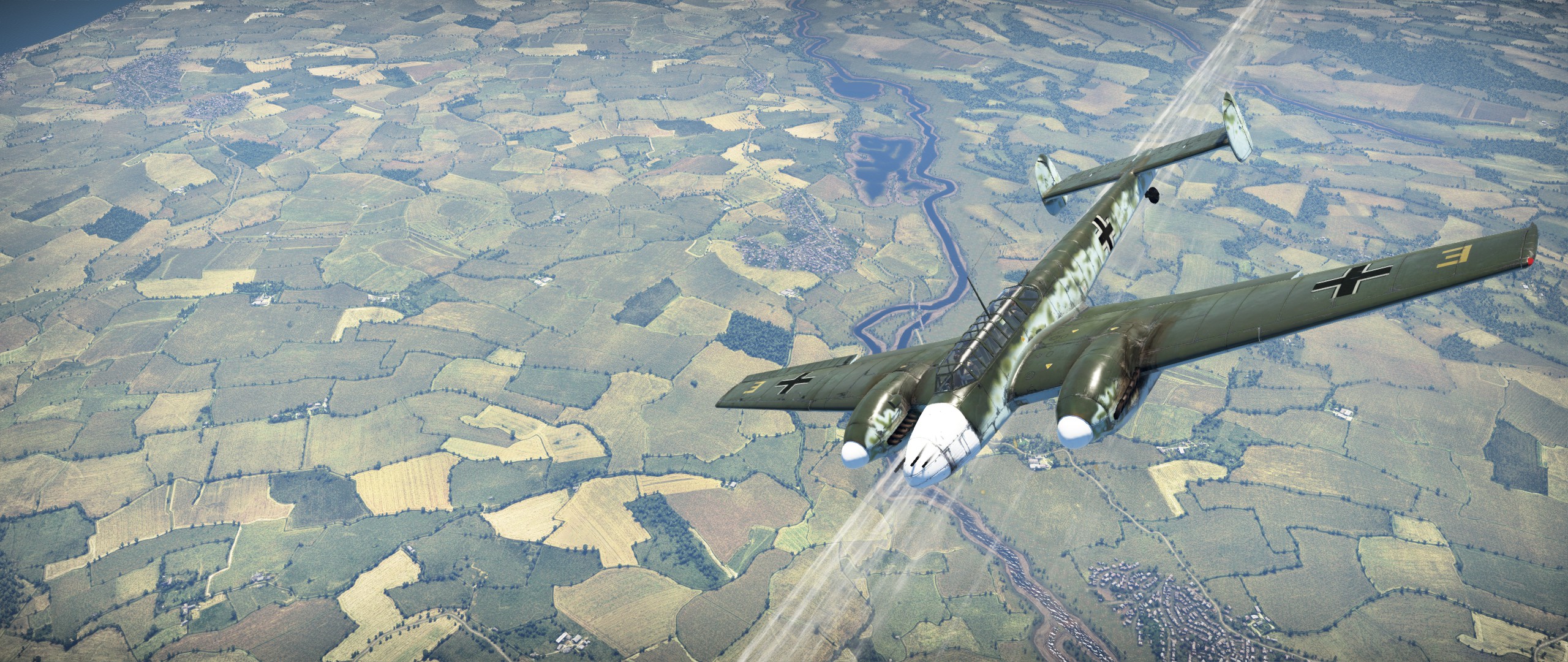
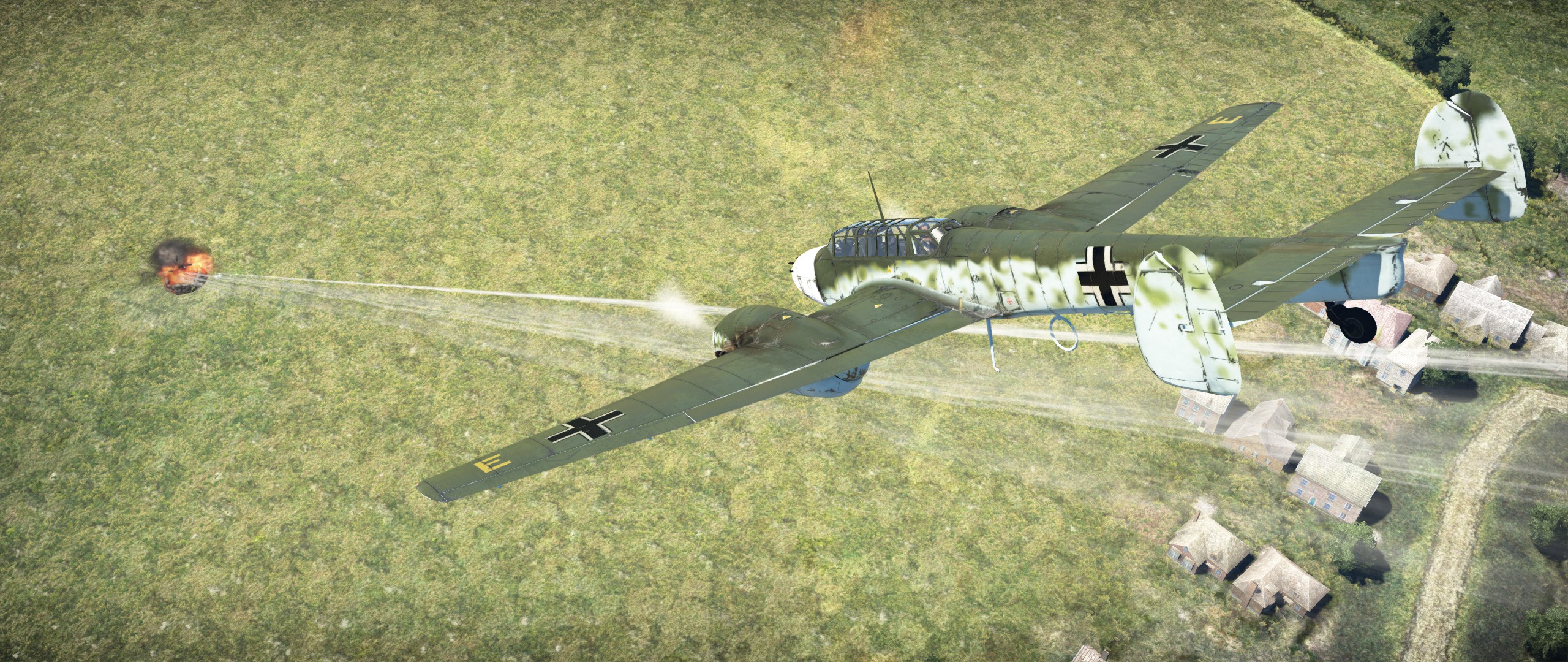




Comments (30)
Would love to see later variants in game. Especially G with various extra weaponry options.
If this plane was Russian, we would have 4 or 5 variants already...
hey i like this style of plane preview.....I like the pros and cons....its easy to read and follow.....nice....I like it.
A very fine Tier 1 Heavy fighter.
Why is it, that on you planned release tree 2013, you had much more common sense. You were planning new versions of the Bf 110 and Ju 88, the planes which saw extreme use by the Luftwaffe. Germany at later teirs now instead has Me 410 and Do 217 which saw limited combat, instead of having newer versions of the Ju 88 (188) and bf 110.
Lov3 the way they did this vehicle profile hoping they do it the same way from now on.
110 G hype?
There are so many versions I would like to see in game. The 37mm armed, the /R2, lighter and faster but without gunner,...
Add 110G4 please. Backbone of nachtjadgschwader force.
very nice, please keep doing more of these in the future.
When can we expect to see later version of this plane? The BF 110 G4 is on the release tree for a long time and I think it really is time to release it ^^ Lower tiers need content too and we have been waiting a long time. And of course it is on the release tree so it has to come right? Or cant we trust the trees either?
would love it IF u add artillery would add a new perspective on the game :D add the sturmtiger please would be a funny derp tank! add French tanks and Japanese and Italian tanks please gajin I would love it! life I u agree :D
Submit a complaint